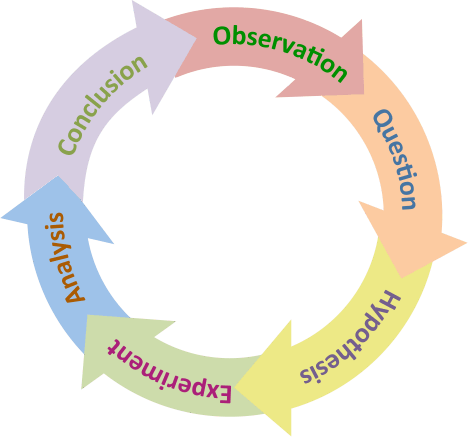Observe
Identify a felt need. Is this felt need the same as the observed real need? Ask, listen, research, look beneath the surface.
METHOD RELIABILITY AND ACCURACY - Understand this part and the judges will be happy.

►Make an observation about the world
►Find a question about that observation
►Guess what you think is happening
►Test your hypothesis in an experiment
►Look at the results
►Consider a conclusion
►The conclusion leads to a better understanding of the world, but also more questions
If you are doing a Technology project you will be designing a solution to an identified problem or need that serves a real purpose. You do this by functional modelling, prototyping, or using materials to build a solution. One should also examine the fitness for purpose of earlier technological outcomes and make informed predictions about where things can go in the future. A really in-depth look at this process can be found here at Samsung.
Examples:
►"The problem is my schoolbag straps keep breaking. I have designed and made a super strong strap to help with this."
►"The problem is Auckland traffic congestion. I have designed a process to help with the traffic at peak hours by reducing two lanes to one."
►"The problem is teacher safety at work. I have designed an app that alerts management to the type of situation and shows the teacher's location on a map at the push of a button."
Identify a felt need. Is this felt need the same as the observed real need? Ask, listen, research, look beneath the surface.
Focus on what matters. Solving even a small part of a big problem can be really helpful. Don't set your goals too big. Be optimistic.
Brainstorm ideas. Think of as many different possible solutions as you can.
Make lists of pros and cons. Analyse your options and select the best.
Create a tangible object or system that can be tested
Seek feedback
Incorporate feedback and consider options:
►Changing prototype
►Improving prototype
►Have you answered the key questions?
►Do we need more information?
►Do we need more ideas?
►Should we start over?
Project management - planning and time management
Motivate and inspire others as you pull a variety of resources together to tackle the issue.
Monitor progress with a mentor - it helps to have a person or team to bounce ideas off.